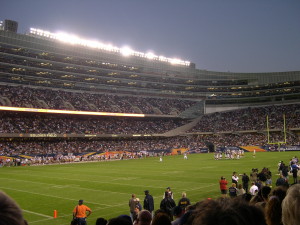
Authors: Steven J. Cernak and Luis Blanquez
In late 2020, the Federal Trade Commission (FTC) and the attorneys-general (AGs) from 48 states filed nearly identical antitrust lawsuits against Facebook for stifling competition by acquiring potential competitors, mainly Instagram in 2012 and WhatsApp in 2014, and for enforcing policies that blocked rival apps from interconnecting their product with Facebook. The alleged effect of this conduct was to (i) blunt the growth of potential competitors that might have used that interoperability to attract new users, and (ii) deter other developers from building new apps or features or functionalities that might compete with Facebook.
This week, the judge hearing the cases agreed to dismiss the claims from the FTC––without prejudice––stating that the lawsuit failed to plead enough facts to plausibly establish that Facebook has monopoly power in the personal social networking services market. Likewise, the Court also dismissed ––with prejudice––a similar case pursued by a group of 48 states on the basis that any alleged violations took place too long ago.
While by no means the final decision on these matters, the motion to dismiss opinion will significantly narrow the FTC case for now. It also highlights some of the difficulties that enforcers will face using the current antitrust laws against Big Tech companies.
Online platforms have been––and continue to be––scrutinized by antitrust enforcers around the world. In the U.S. the Antitrust Subcommittee of the House Judiciary Committee issued last year its long-anticipated Majority Report of its Investigation of Competition in Digital Markets. The Report detailed its findings from its investigation of Google, Apple, Facebook, and Amazon along with recommendations for actions for Congress to consider regarding those firms. In addition, the Report included recommendations for some general legislative changes to the antitrust laws. Since then, online platforms have been involved in high-profile antitrust litigation in the U.S. So even though Facebook has won the first round of this litigation, the war is far from over.
Chinese Translation: Thank you to our friends at the Beijing Fairsky Law Firm for preparing a translation in Chinese of this article.
Update: Please see an important update about the FTC’s amended complaint at the end of the article.
The FTC and State AGs Parallel Antitrust Complaints against Facebook
Both suits focused on the same Facebook categories of conduct. First were the acquisitions of Instagram and WhatsApp, both of which occurred more than five years ago. These deals allegedly increased Facebook’s power over social media networks, facilitating data integration and its sharing among some of the largest social media platforms. Next was Facebook’s requirement that any applications connecting to Facebook may not compete with Facebook or promote any of Facebook’s competitors. The complaint alleged that Facebook enforced these policies by cutting off access to the Application Programming Interface (“API”), the software that allows applications to talk to one another to allow communication with rival personal social networking services, mobile messaging apps, and any other apps with social functionalities.
Both the FTC and AG suits claimed that Facebook’s actions amounted to illegal monopolization in violation of Sherman Act Section 2. The states’ suit also claimed that the two acquisitions violated Clayton Act Section 7, the statutory prohibition of anticompetitive mergers.
In March Facebook Fired Back in its Motion to Dismiss
In March 2021, Facebook moved to dismiss the suits on several grounds.
First, the company claimed that the complaints did not properly allege a relevant market or that Facebook had monopoly power in any market.
Second, Facebook asserted that the FTC could not claim that the two acquisitions were illegal monopolization because the agency had cleared both transactions earlier under the Hart-Scott-Rodino premerger notification system. Even if the agency could make such a claim, the company claimed that the FTC failed to properly allege that such acquisitions were anticompetitive. (We discussed the concept of post-HSR review both prior to and immediately after the FTC complaint was filed.)
Finally, Facebook claimed that the complaint did not properly allege that the company’s decision not to deal with all potential app developers who were potential competitors was subject to an exception to antitrust law’s usual rule that even monopolists can choose their own partners. Basically, under U.S. antitrust laws if you are a monopolist, you can still refuse to deal with your competitors, unless: (i) you have already been doing business with them, and (ii) by stopping you are giving up short-term profits for the long-term end of knocking them out of the market.
The District Court’s Opinions Dismissing Both Cases
The judge hearing both cases granted Facebook’s motions to dismiss. The Court dismissed the FTC complaint without prejudice. This means that the FTC is allowed to amend its complaint and refile the case, and now has 30 days to do so. The AGs were not that lucky, and the judge dismissed their complaint with prejudice. The Court applied the doctrine of laches to conclude that AGs waited too long to challenge Facebook’s purchases of Instagram in 2012 and WhatsApp in 2014.
In the decision re the FTC, the Court found that the complaint fails plausibly to allege how Facebook has a monopoly over personal social networking (“PSN”) services.
As with all monopolization plaintiffs, the FTC must plausibly allege that Facebook has monopoly power in some properly defined market. As do most plaintiffs, the FTC chose to allege this power indirectly by alleging that Facebook has a high share of the market, here for PSN services. Despite some misgivings, the court found that the complaint’s allegations make out a plausible market for PSN services.
But that hardly ends the analysis. The FTC must also explain why Facebook enjoys a high share of that market and, therefore, monopoly power. Here, the court found that the FTC’s allegations were inadequate for two reasons.
First because that “PSN services are free to use, and the exact metes and bounds of what even constitutes a PSN service — i.e., which features of a company’s mobile app or website are included in that definition and which are excluded — are hardly crystal clear.” In other words, the FTC must further explain whether and why other, non-PSN services available to the public either are or are not reasonably interchangeable substitutes with PSN services.
Second, even if the FTC better defines the market(s) of social networking, it must better explain how it developed the allegation that Facebook enjoys a market share of at least 60%: “[T]he FTC’s inability to offer any indication of the metric(s) or method(s) it used to calculate Facebook’s market share renders its vague ‘60%-plus’ assertion too speculative and conclusory to go forward.” Thus, the FTC has also fallen short to plausibly establish the existence of monopoly power by Facebook in the relevant market.
That finding alone was enough to support the court’s granting the motion to dismiss; however, it helpfully went on to discuss Facebook’s other grounds for dismissal.
The court explained that even if the FTC had sufficiently pleaded market power, its challenge to Facebook’s policy of refusing interoperability permissions with competing apps also failed to state a claim for injunctive relief. The Court held in both decisions that there is nothing unlawful about having such a policy in general. While implementation of such a policy can be illegal monopolization in certain limited circumstances, the FTC did not allege such facts. Finally, all such denials of access occurred in 2013, seven years ago. Thus, the FTC lacks statutory authority to seek an injunction from a court for such past conduct.
On the other hand, the court did find that the FTC might be able to seek injunctive relief relating to Facebook’s past acquisitions of Instagram and WhatsApp. While those acquisitions took place years ago, the court found that Facebook’s continued ownership of the companies could be considered a continuing violation of Section 2. While the doctrine of laches does not apply to the US government, including the FTC, the court did note but did not decide several issues, including remedial ones, with such a long-delayed allegation.
The judge also dismissed the parallel case brought by the AGs. The court explained that unlike the federal government, the states are bound by the doctrine of laches, in which those who “sleep on their rights” and wait too long to file a case cannot seek court relief. As a result, the allegations regarding the Instagram and WhatsApp acquisitions were insufficient to state a claim under either Sherman Act Section 2 or Clayton Act Section 7.
Using an analysis identical to the one used with the FTC complaint, the judge further rejected the AG’s claims that Facebook’s refusal to allow interoperability with competing apps constituted illegal monopolization. Because all of the claims of the AG’s were rejected in ways that cannot be rectified by the AG’s, the judge dismissed the complaint without any chance for the AG’s to modify the complaint and refile.
Final Remarks
At the time of this writing, the FTC is considering possible next steps. It could beef up its allegations regarding the market definition and Facebook’s share of that market and file an amended complaint regarding Facebook’s prior acquisitions. It could also appeal the dismissal of its current complaint.
Continue reading →
 The Antitrust Attorney Blog
The Antitrust Attorney Blog












